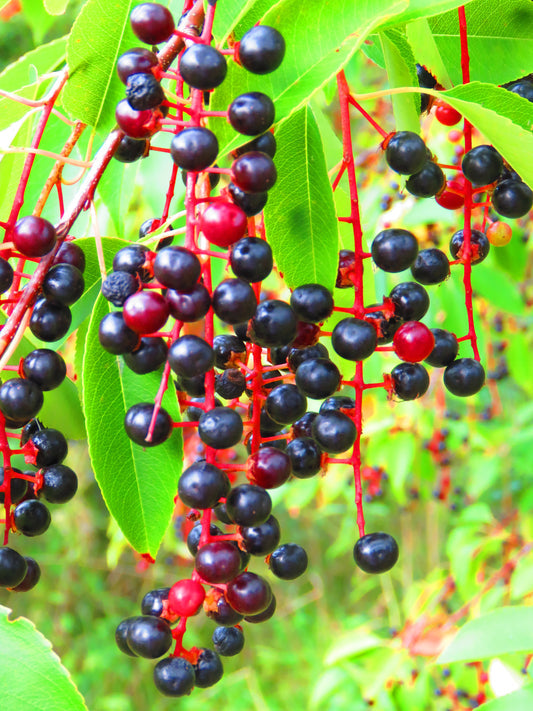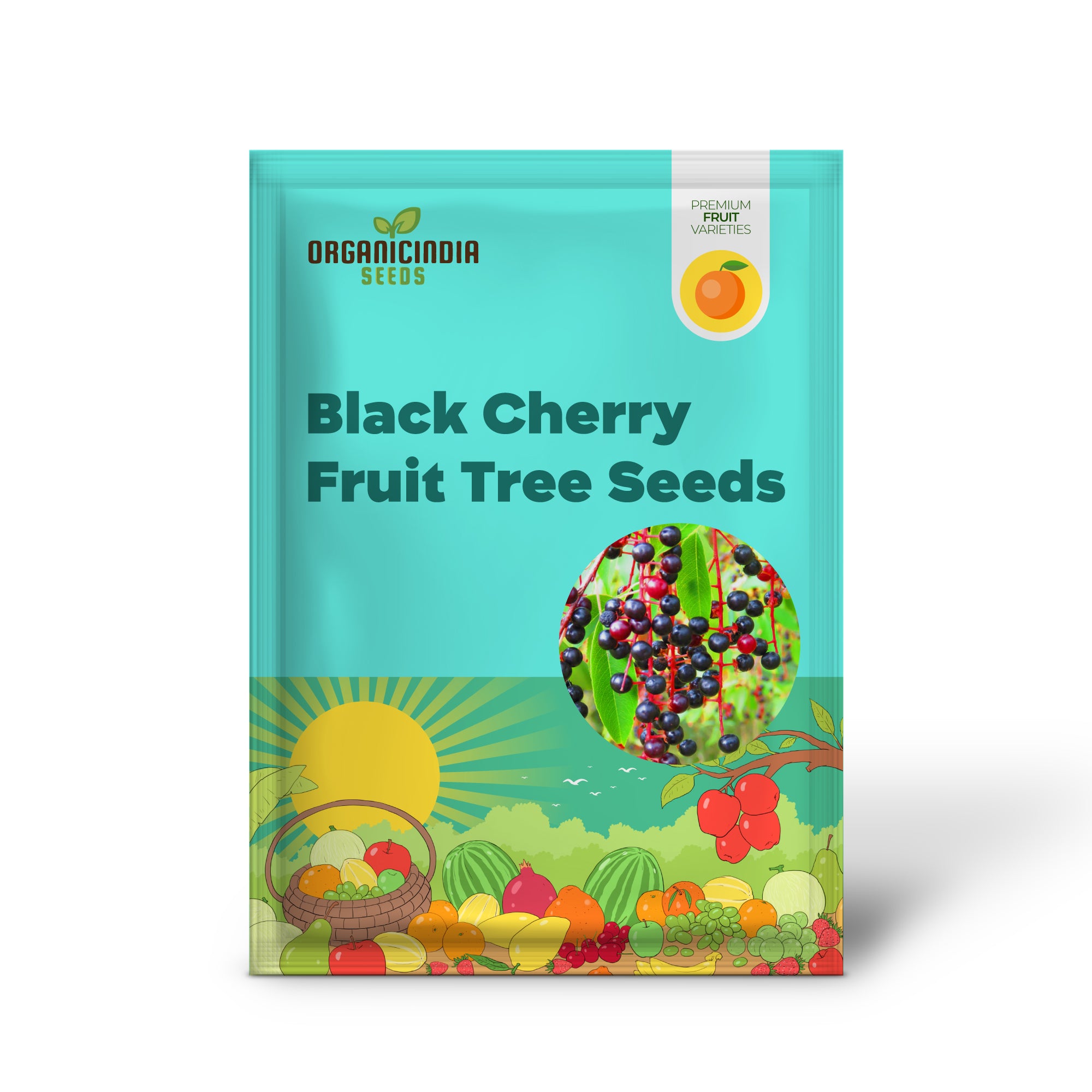



Free Shipping
Safe & Secure Payments
The Black Cherry (Prunus serotina) is a native North American tree that is widely appreciated for its beautiful white spring blossoms, glossy dark cherries, and rich autumn foliage. Known for its striking, fragrant white flowers that bloom in clusters, this tree adds a significant ornamental value to any garden or landscape. The dark, almost black cherries that follow the flowers are prized for their flavor and are often used in making jams, jellies, and even in beverages. Beyond its aesthetic appeal, the Black Cherry tree is a beneficial addition to the garden, offering shade, wildlife support, and soil improvement. With its relatively fast growth rate and easy care requirements, this tree is an excellent choice for gardeners looking for a beautiful, functional addition to their space.
Key Features:
Growing Information:
Light:
Black Cherry trees thrive in full sun but can tolerate partial shade. For the best fruit production and overall tree health, ensure that the tree receives at least 6 hours of direct sunlight per day. The more sun the tree gets, the more fruit and flowers it will produce.
Soil:
Black Cherry trees are adaptable to a wide range of soil types, including loamy, sandy, and clay soils. However, they prefer well-drained, slightly acidic to neutral soil with a pH range of 6.0-7.5. Planting in rich, moist soil will encourage healthy growth and fruit production. If planting in heavier clay soils, ensure that the area has proper drainage to avoid root rot.
Planting Tips:
Start Black Cherry seeds indoors by stratifying them for 30-60 days in the refrigerator before planting to mimic the winter conditions they would naturally experience. Once stratified, sow the seeds in a well-draining seed-starting mix, about 1/4 inch deep. Keep the seeds at around 65-70°F (18-21°C) until they germinate, which can take anywhere from 1 to 3 months. After the seeds germinate and seedlings are established, transplant them outdoors when the weather is consistently warm, and there is no danger of frost. Space trees about 15-20 feet apart to allow them room to grow.
Watering:
Keep the soil around Black Cherry trees consistently moist during the growing season, especially when the tree is young. While they can tolerate short dry spells once established, regular watering will help the tree thrive and produce abundant fruit. Ensure the soil drains well to prevent waterlogged roots. A layer of mulch around the base can help retain moisture and regulate soil temperature.
Benefits:
Growing Zones:
Black Cherry trees are hardy in USDA Zones 3-9. This wide range of hardiness makes them suitable for a variety of climates, from colder northern regions to warmer southern areas. They do best in areas with cold winters and moderate summers, although they can tolerate a variety of conditions once established.
How to Use in the Garden:
Conclusion:
The Black Cherry (Prunus serotina) is an elegant and functional tree that combines beauty, fragrance, and edible fruit. Its fragrant white flowers in spring, lush green foliage in summer, and vibrant fall colors make it a striking addition to any landscape. The small, flavorful cherries provide delicious options for cooking, preserving, and even beverage-making. A fast-growing and hardy tree, Black Cherry thrives in a variety of conditions and offers valuable benefits such as shade, wildlife support, and a year-round visual appeal. Whether you’re looking to add an ornamental feature, improve your edible landscape, or create a wildlife-friendly garden, the Black Cherry tree is a versatile and rewarding choice.
حدِّد الخيارات

